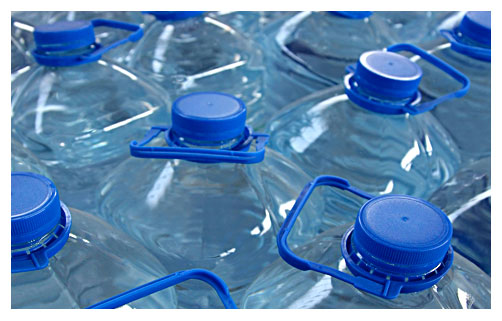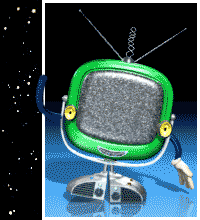When you travel, drinking lots of water helps you stay fit—as long as the water is fit to drink. Being well-hydrated helps counteract some of the challenges of travel: fatigue and jet lag, altitude changes, and hot and cold environments, to mention a few. Minimal
dehydration occurs even before you feel thirsty, subtly affecting your mental and physical abilities. But available drinking water is not always fit to drink.
Always drink bottled water when traveling
Water everywhere contains some
microorganisms. Your body is accustomed to the ones that live in your tap water at home, but those in water elsewhere—even where sanitation is good—may be different enough to cause mild discomfort the first few days you drink it. Such discomforts are often blamed on jet lag and fatigue—the remedies for which include drinking water. But if you drink tap water populated by unfamiliar organisms, the “remedy” can worsen your discomfort. The more water you drink, the more likely you will be to ingest enough organisms to make you ill.
Because stomach acids help kill organisms, people who take antacids (which reduce stomach acidity) should drink bottled water when traveling. People with diabetes or an immune problem, or who are pregnant or elderly, should also drink bottled water. Intestinal illnesses are more troublesome with these conditions.
All bottled water is not created equal
Bottled water is merely subterranean spring water or treated tap water and, under normal circumstances, is usually no better than tap water. Where sanitation is poor, though, opt for bottled water from well-known international brands. Local brands may contain organisms and sometimes chemicals or other contaminants (
arsenic in southern Asia, for example). Drinking carbonated bottled water adds a layer of safety. Carbonation acidifies water, killing organisms. Carbonated water is known everywhere as “with gas,” even by waiters who speak no English. Some bottled water is mineral water and contains calcium, sodium, and other minerals, often in large amounts, which may worsen certain heart and kidney problems. Read labels.
"No ice, please"
Ice cubes are usually made from tap water, often in difficult-to-clean equipment. Ice is acceptable in areas where sanitation is good; a cube or two is unlikely to contain sufficient organisms to cause illness. But where sanitation is suspect, it is best to avoid ice cubes. For ice addicts, you can cool drinks by placing ice in a leakproof plastic bag and inserting the bag into your drink.
"No ice, please" does not necessarily mean that you'll get no ice
Often when you ask for no ice in a drink that traditionally takes ice, you will get ice. It's a habit. When you remind waiters of your request, they take out the ice. But how?
a) Remove it (with their hands?) and fill the glass with more of the drink?
b) Pour out the drink and fill the same glass with a new drink?
c) Get a new glass with a fresh drink?
Hopefully, “c”. In “a” and “b,” the water from the melting ice is in your drink or adhering to your original glass.
Even 100-proof liquor on the rocks does not make for a 100% foolproof drink. Alcohol does reduce the number of organisms in a drink, but slowly—over a period of hours. The rate depends on the amount of alcohol in the drink, the size of the ice cubes, and the types of organisms in the ice. (Warn your parents before they order that cocktail!)
Canisters and special taps in hotel rooms labeled "safe to drink" may not be so safe
The water in the canisters is refilled from tanks wheeled down the hall, a process subject to lapses in sanitation. Water from special taps requires optimum disinfecting, proper storing, and clean pipes to be truly safe for drinking.
A ribbon can help you avoid intestinal upsets
Tie a brightly colored ribbon around the tap as a reminder to use bottled water. However, tap water that is too hot to touch is generally safe. It is “pasteurized,” having remained heated in the heater and pipes sufficiently long to kill organisms. Boiled water is always safe from organisms. Carry an electrical coil, a current converter, and a socket adapter (available in travelers' supply catalogs); boiling for a few seconds (yes, just seconds) is enough to kill any organisms in the water. Remember that boiling water does not remove chemicals and other impurities.
Opt for humdrum canned beverages over tempting fresh fruit drinks from street vendors
Fruit drinks are usually squeezed in impossible-to-clean equipment and may be diluted with tap water and contain ice.
No natural water is safe to drink
Crystal-clear water in pristine surroundings may contain organisms from birds, animals, and humans. Boil or disinfect natural water. Disinfectants and filters are available at sporting goods stores and on the internet. Follow instructions on labels.
Recreational water is for swimming, not swallowing
Even at well-maintained swimming facilities, swimmers who duck their heads underwater tend to have more intestinal illnesses than swimmers who do not, and waders have fewer illnesses than swimmers. Factors increasing risk include crowding, babies in diapers, and no chlorination (lakes and rivers, for example).

About Dr. Neumann
Link to Dr. Karl Neumann's Web site at www.kidstraveldoc.com






![]()